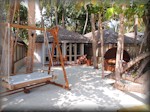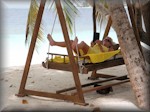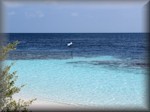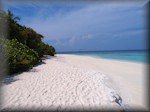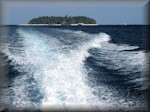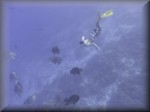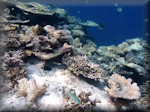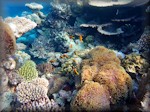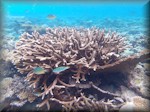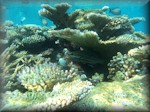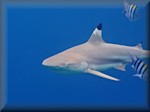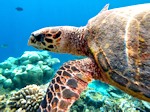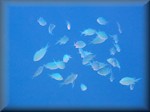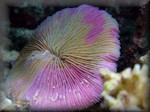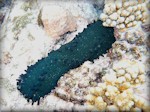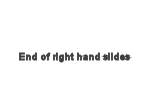Best snorkeling in the Maldives for underwater photography
Angsana Ihuru Resort - Ihuru - North Male (Kaufu) Atoll - The Maldives
Totally recommended as a holiday destination generally and especially for underwater photography
Ihuru is in the south-western quadrant of North Male Atoll (north-west of the Maldivian capital, Male)
25 minutes by speed boat from Ibrahim Nasir International Airport. The airport itself is on Hulhule island which is right next to the Maldivian capital, Male.
Ihuru is a small island (as are many Maldivian islands), with 45 villas. 10 minutes and you can walk around it.
25 minutes by speed boat from Ibrahim Nasir International Airport. The airport itself is on Hulhule island which is right next to the Maldivian capital, Male.
Ihuru is a small island (as are many Maldivian islands), with 45 villas. 10 minutes and you can walk around it.
The company runs Angsana Ihuru resort and the more established Banyan Tree resort on
the nearby Vabbinfaru island.
There is free boat transport (10 minutes) to the sister resort. This provides a nice change and more opportunities for both day and night snorkelling. Link to page on the Banyan tree.
What no pictures can convey is the friendliness, service and enthusiasm of all the resort's staff. The dive centre is excellent (Hi Moosa).
There is free boat transport (10 minutes) to the sister resort. This provides a nice change and more opportunities for both day and night snorkelling. Link to page on the Banyan tree.
What no pictures can convey is the friendliness, service and enthusiasm of all the resort's staff. The dive centre is excellent (Hi Moosa).

Gallery to give a feel for the Angsana Ihuru resort

pass cursor over thumbnails left and right to see what the resort is like at Angsana Ihuru
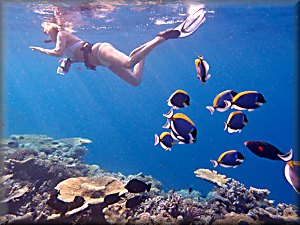
Angsana Ihuru - accommodation is luxury, modern and refined but also, seemingly, in
sympathy with the island and, as for the staff ...
Food - some nights a buffet with some cooked 'while you wait', other nights - a menu.
The buffet offered a wide variety and overall the food was very good, with a similar level of service. There's a nice bar with a sand floor.
Food - some nights a buffet with some cooked 'while you wait', other nights - a menu.
The buffet offered a wide variety and overall the food was very good, with a similar level of service. There's a nice bar with a sand floor.
WIFI available everywhere. How can you complain that it is slow when it is free?
But fish and coral pictures for identification are usually big and I'm impatient.
If you are a tele addict, or just want to catch up with the world news, then forget it. Television is internet based and rarely worked properly (2013).
But fish and coral pictures for identification are usually big and I'm impatient.
If you are a tele addict, or just want to catch up with the world news, then forget it. Television is internet based and rarely worked properly (2013).
Fish are not the only attraction. The house reef is magnificient.
The corals from the jetty, past reef access points 2 and 1 and all up the right hand side are the best I've experienced in the Maldives.
The house-reef is relatively narrow and adjacent to a steep drop-off from about 1 o'clock to 7 o'clock on the map.
This means the strongest current, but the best visibility, the best corals and terrific fish which either live amongst the corals or come up from the deep. Expect to see rays, turtles and reef sharks.
The house reef widens from 7 o'clock (ie RAP 3), around to 12 o'clock.
During our stay, this meant less current, reduced visibility and a substrate of coral outcrops in amongst sand and coral rubble. On a good day this offered fun photography.
The corals from the jetty, past reef access points 2 and 1 and all up the right hand side are the best I've experienced in the Maldives.
The house-reef is relatively narrow and adjacent to a steep drop-off from about 1 o'clock to 7 o'clock on the map.
This means the strongest current, but the best visibility, the best corals and terrific fish which either live amongst the corals or come up from the deep. Expect to see rays, turtles and reef sharks.
The house reef widens from 7 o'clock (ie RAP 3), around to 12 o'clock.
During our stay, this meant less current, reduced visibility and a substrate of coral outcrops in amongst sand and coral rubble. On a good day this offered fun photography.

You could lie on the sandy bottom (if weighted), and compose shots of the coral or the fish, on and
in, an adjacent coral outcrop.
Naturally, the fish life was not up to that of the other side.
I have no idea what the drop-off is like here.
The whole island can be circum-snorkeled in an hour (without photographic stops).
Note that to snorkel from RAP-1 to RAP's 4/ 5 would take half an hour. This has to be taken into account when deciding on the RAP entry and which way to head.
Swimming over the actual reef is restricted for obvious reasons. This island is passionate about preserving its environment.
At high tide you could swim across the reef without touching anything, if you had to. You couldn't do this at mid to low tides.
Naturally, the fish life was not up to that of the other side.
I have no idea what the drop-off is like here.
The whole island can be circum-snorkeled in an hour (without photographic stops).
Note that to snorkel from RAP-1 to RAP's 4/ 5 would take half an hour. This has to be taken into account when deciding on the RAP entry and which way to head.
Swimming over the actual reef is restricted for obvious reasons. This island is passionate about preserving its environment.
At high tide you could swim across the reef without touching anything, if you had to. You couldn't do this at mid to low tides.
Look for the current.
Watch other snorkellers etc. Is it going left to right, right to left, is it strong or barely running and choose your RAP.
Watch other snorkellers etc. Is it going left to right, right to left, is it strong or barely running and choose your RAP.
Access - is a doddle. Walk in from the beach, sort yourself out in
the shallow lagoon between the beach and the house reef, and swim to your chosen access point.
The very shallow lagoon can provide photographic opportunities right adjacent to the
start of the coral reef proper.
Link to Angsana Ihuru Resort.
Link to Angsana Ihuru Resort.
Gallery below to give an idea of the seascape. Map above shows the reef access points (RAPs).
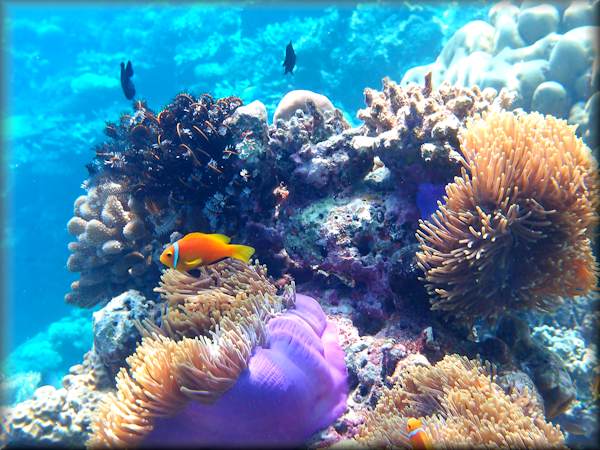
pass cursor over thumbnails left and right to see what is under the surface at Angsana Ihuru
Gallery below of of fish and critters are likely to see at Angsana Ihuru. See map above showing reef access points (RAPs).
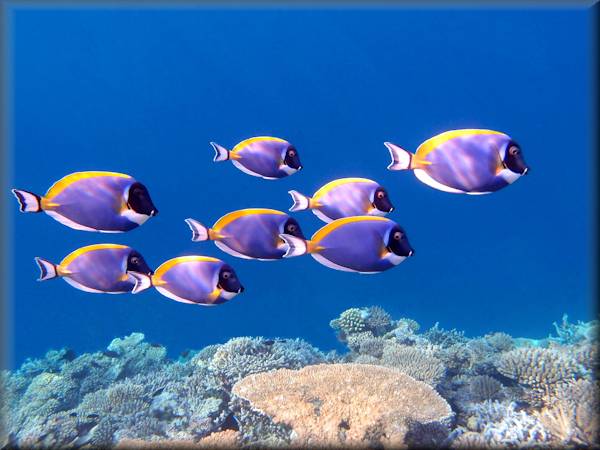
pass cursor over thumbnails left and right to see what is under the surface at Angsana Ihuru
Any comments? To email please click on the envelope.
(captions below needn't be read as you will have seen them with the gallery pictures -
repeated below so are visible to Google/ search engines)
captions to Angsana Ihuru 'fish and critters' gallery pictures
captions to left 'fish' thumbnails
- the striking and common Powderblue surgeonfish or Powderblue tang (Acanthurus leucosternon) - 54cm - atypically in a school above the coral - usually active making a good shot of an individual challenging
- powderblue surgeonfish (Acanthurus leucosternon)- 54cm - atypically, shoaling as about to feed. As individuals, they are normally active - so, getting good shots of one individual is challenging - but worth it
- Black foot anemonefish (Amphiprion nigripes) - 11cm - amongst Heteractis magnifical - only coral inhabits - neat, colourful fish and nice soft coral setting for good shots - once found, you know where it lives
- Blacktip reef shark (Carcharhinus melanopterus) - to 1.6m - showing a bit of 'attitude' - still feeding as early morning - usually harmless - 'near-threatened' IUCN category - near reef access point 1
- white lined or slender grouper, (Anyperodon Leucogrammicus) - up to 65cm - very slender for a grouper (hence name) - not uncommon - as usual, solitary but less flighty than usual
- Roundface, longfin or tail-fin - batfish (Platax teira) - 60cm - small school over drop-off between reef access point 1 but nearer 2) - very slow but challenging - slowly turn away or sink, so you can slowly sink with them trying to get a good pose and end up quite deep
- close-up of a friendly, easy to photo, critically endangered, Hawksbill turtle (Eretmochelys imbricata) - didn't see it this far in over the reef often - very approachable but please don't disturb or touch
- large school of Big eye trevally (Caranx sexfasciatus), in the shallow lagoon under the jetty walkway
- small group of green pullers or blue-green chromis (Chromis viridis) - up to 8cm - usually near coral but, here on edge of drop-off - this fish is very common, approachable and worth snapping
captions to right 'critters' thumbnails
- the stunning Thousand pores sea star (Fromia milleporella) in natural habitat- about 15cms - in right of reef access point 1 channel. Only saw the once - probably didn't look hard enough - an echinoderm which can regenerate lost arms
- rather beautiful Bennett's feather star (Oxycomanthus bennett) - up to 30cms - unusually this species opens during the day - between reef access points 1 and 2
- colours of this feather star vary - 'in-built macro' used for a close up of another Bennett\'s feather star (Oxycomanthus bennett). Shot augmented with fill-in flash as late afternoon
- scourge of hard and stony corals - Crown of thorns (Acanthaster planci) - 35cms = second largest sea star. Up to 21 arms - venomous spines - hiding during day - removed by resort during 'reef cleaning'
- scuted mushroom coral (Fungia scutaria) grows to 17cm - colours vary - solitary and free-living (ie not attached to the substraste). Not particularly common
- Bennett's feather star up close and personal, thanks to the camera's built in macro
- dark green sea cucumber (Stichopodidae chloronotus) - 30cms - resaonably common - obviously easy to photograph - fill-in flash used to bring out the green
captions to Angsana Ihuru 'seascape' gallery pictures
captions to left 'seascape' thumbnails
- hard corals, sea anenomes and feather stars - Black foot anemonefish (Amphiprion nigripes) among its only host - sea anemone - Heteractis magnifical - colourful base to 1M across
- a nice, colourful collection of corals
- submerged pinnacle covered with corals and surrounded by fish
- like an underwater cove - the best photo area in Angsana - about 10 metres to the left of reef access point 1
- staghorn coral shot in the sandy area showing the reduced visibility in this area (near reef access point 4)
- deep down in the drop-off - Ewan playing with unconcerned roundface or longfin batfish (Platax teira) - poor colours from the Finepix camera - it's white balance issue again
- shot from the inner shallow lagoon over reef top towards the drop-off - two prominent Meyer's butterflyfish
- a starry pufferfish (Arothron stellatus) - 1.2M - one of the world's largest pufferfish idling about among various corals
captions to right 'seascape' thumbnails
- much growth including a brain coral (possibly platygyra daedalea - bottom right) - leaf or elephant ear coral lower left? - plus very-long-nose butterflyfish (Forcipiger longirostris) -22cm - not uncommon
- garden with several plate corals - was told the broken one (bottom left) should regrow from it's stump
- variety of corals
- how many corals, sea anemone and colours can you expect in a single seascape? 'The cove' from another angle - about 10 metres left of RAP 1 - black foot anemonefish and 'their' sea anemone
- a nice staghorn coral with a fallen plate coral to it's right (was told that it might, hopefully, regrow)
- corals and roundface batfish (Platax teira) - calling an old wreck 'home' - slightly to jetty-side of reef access point 3. Poor colours from the Finepix lacking the white balance setting
- white lined or slender grouper (Anyperodon leucogrammicus) - 50cm - under a beautiful coral outcrop. Proof that it pays to dive and look around - Finepix has almost coped re colour due to shallow water
captions to Angsana Ihuru resort gallery pictures
captions to left 'resort' thumbnails
- view on arrival - sun, sea, beautiful beach and a bar
- hardly your typical hotel reception area - friendly and helpful
- the jetty at 'rush hour' - the big eye trevally school under here and the small but interesting shallow wreck is a few metres to the right of the jetty as we look at it here
- this will do for refreshment. Across the water is the nearby Banyan tree sister resort - well, worth a day trip and the boat taxi is free
- the dive centre (plus table tennis) - talk about helpful and knowledgeable - try to find Moosa
- dining outdoor area - gets very full, particularly in the evening. Eating later seemed to mean a choice of the better tables
- obligatory resort heron - waiting outside fish grill (left) and after swallowing big fish fillet in seconds. looks scrappy but extremely well feed - after lunch flies to Banyan tree for 5PM feed
- bar interior - with a posing snorkeller - coral sand floor raked at least daily - nice - shame so few takers
captions to right 'resort' thumbnails
- interior of villa towards front door - 'open to the elements' bathroom and shower off hallway
- villa interior - bed area, seating area and out to the back 'yard'. Modern, bright with quite a Japanese feel
- the villa backyard - hammock, outdoors bed and so on, raked (daily) rather than mown
- a Kindle is a necessity for 'she who thinks she should be obeyed'
- where can I squeeze in my beach towel? Inner lagoon is narrow at this point near reef access point 1
- sign showing a reef access point (RAP). Inner lagoon is narrow and simply sand near reef access points 1 and 2
- wider lagoon inside reef access points 4 and 5 - visibility tends to be poorer than other side of island. The dark areas in the inner lagoon are patches of coral surrounded by sand and coral rubble
- the jetty before departure - going, going
- leaving at speed in the speed boat. Obviously the worst part of the holiday












